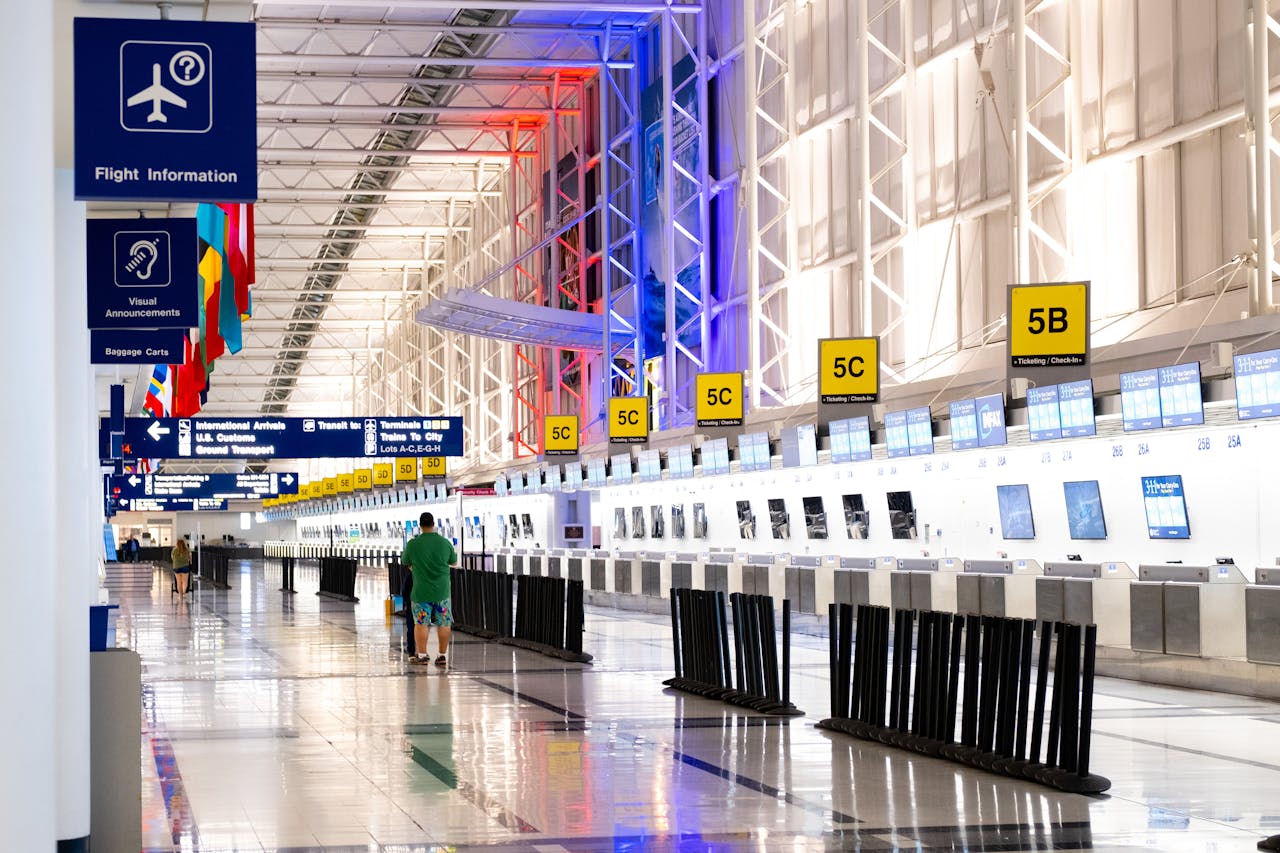JetBlue Lifts Revenue Forecast for Q3
JetBlue Airways increased its third-quarter revenue forecast on Thursday, signaling positive momentum in the airline’s performance. The company benefited from streamlined operations, strong summer travel demand, and passengers seeking alternatives after a global cyber outage disrupted several other carriers.
Initially forecasting a revenue decline, JetBlue now expects revenue to range from a 2.5% decrease to a 1% growth compared to the previous year. This marks a substantial improvement from its earlier forecast of a 1.5% to 5.5% revenue drop.
Boost from Cyber Outage and Strong Travel Demand
JetBlue experienced a surge in bookings in July, primarily due to the fallout from a global cyber outage. The outage, caused by a software update by cybersecurity firm CrowdStrike, led to significant delays and cancellations for other major airlines. Fortunately, JetBlue was unaffected, giving it an edge as travelers sought alternative carriers.
The company’s shares jumped 6.4% in early trading on Thursday, outperforming a largely subdued broader market.
Citi analyst Stephen Trent noted that while part of JetBlue’s performance boost may have been temporary, driven by the additional passengers displaced by the outage, the overall outlook remains promising.
 JetBlue Q3 Revenue Forecast – Stronger Bookings in Latin America
JetBlue Q3 Revenue Forecast – Stronger Bookings in Latin America
A key driver for the improved revenue forecast of JetBlue was stronger-than-expected demand in Latin America, one of JetBlue’s primary markets. In addition, the airline cited gains from previously announced cost-cutting measures and the cancellation of less-profitable routes. These strategic moves have helped the company maintain profitability and strengthen its market position.
JetBlue’s decision to streamline operations follows the termination of its proposed $3.8 billion merger with ultra-low-cost carrier Spirit Airlines in March. The airline has since shifted its focus to organic growth, efficiency improvements, and financial discipline.
Cost-Cutting Measures and Deferred Aircraft Deliveries
As part of its effort to enhance financial performance, JetBlue has taken several cost-cutting measures. One of the most notable steps was deferring the delivery of 44 new Airbus jets. This move is expected to reduce the company’s planned capital expenditures between 2025 and 2029 by approximately $3 billion.
These deferred aircraft deliveries align with JetBlue’s broader strategy to manage capacity growth prudently. By adjusting its capital expenditures, the airline is positioning itself to weather potential economic downturns or fluctuations in travel demand.
JetBlue Q3 Revenue Forecast – Unit Cost Expectations Lowered
In terms of costs, JetBlue provided a more favorable outlook for the current quarter. The airline now expects unit costs, excluding fuel, to rise between 5% and 7%, compared to the previously forecasted increase of 6% to 8%. This slight adjustment suggests that JetBlue’s cost control measures are beginning to yield results.
Fuel costs, which account for a significant portion of airline expenses, are also expected to moderate. Jet fuel prices have fallen during the quarter, providing a tailwind for JetBlue’s bottom line. Lower fuel costs could help mitigate the impact of rising unit costs, enabling the airline to remain competitive in a volatile market environment.
Post-Merger Strategy Shift
Since the termination of its proposed merger with Spirit Airlines, JetBlue has pivoted its focus towards internal growth. The scrapped deal, valued at $3.8 billion, would have created a larger low-cost airline to rival industry giants like American Airlines and Delta Air Lines. However, the deal faced regulatory scrutiny, leading to its abandonment.
JetBlue has since redirected its efforts toward optimizing its existing operations. The airline has cut underperforming routes and focused on regions with strong demand, such as Latin America. These strategic adjustments, coupled with cost-saving initiatives, have contributed to the company’s improved financial outlook.
JetBlue Airways Financial Overview
JetBlue Airways holds a market cap of $1.88 billion, reflecting its current valuation. The company’s enterprise value stands at $6.25 billion, showcasing its broader financial footprint.
The next earnings report is expected on October 29, 2024, and will be closely monitored by investors. With 346.83 million shares outstanding, the company has seen its share count increase by 3.54% over the past year. Notably, institutional investors hold 80.88% of the total shares, indicating strong institutional interest.
Debt and Profitability Metrics
JetBlue’s financial position shows a current ratio of 0.54, reflecting lower liquidity levels. The company’s debt-to-equity ratio is 2.23, indicating a higher reliance on debt. Return on equity (ROE) remains negative at -30.30%, underscoring challenges in profitability. Additionally, the airline’s net income over the past year recorded a loss of $947 million, equating to a loss per share of -$2.80.
Analyst Outlook and Stock Performance
JetBlue’s improved forecast has garnered attention from analysts. Citi’s Stephen Trent noted that the carrier’s updated outlook was encouraging, even though some of the positive adjustment could be attributed to the temporary influx of passengers displaced by the CrowdStrike-related outages.
Despite these temporary gains, analysts remain cautiously optimistic about JetBlue’s ability to sustain this momentum. The airline’s shares have seen a notable rise, up 6.4% in early trading on Thursday, reflecting investor confidence in the airline’s ability to navigate ongoing industry challenges.
 JetBlue’s Competitive Position
JetBlue’s Competitive Position
In the competitive airline industry, JetBlue’s ability to adapt and adjust its strategies has helped it remain resilient. The deferral of aircraft deliveries and the cancellation of underperforming routes are part of a broader strategy to maximize efficiency and profitability. These moves are designed to strengthen the airline’s financial position in the face of market volatility and rising costs.
By focusing on key markets, such as Latin America, JetBlue is capitalizing on areas with strong demand. This approach has enabled the airline to offset some of the challenges posed by rising costs and global economic uncertainty.
JetBlue Robust Strategy and Revenue Forecast Highlight Industry Navigation
The broader airline industry continues to face challenges, from rising fuel prices to ongoing regulatory scrutiny. However, JetBlue’s recent actions suggest the company is well-positioned to navigate these headwinds. The decision by JetBlue to raise its third-quarter revenue forecast reflects the airline’s ability to adapt to changing market conditions. The combination of strong summer travel demand, operational improvements, and cost-saving measures has positioned the airline for a more optimistic outlook. As the airline continues to navigate industry challenges, its strategic moves, particularly in Latin America and cost control, will remain key factors in its future performance. Investors and analysts will be closely watching JetBlue’s progress as it aims to capitalize on these positive trends.
Chart by Trading View

